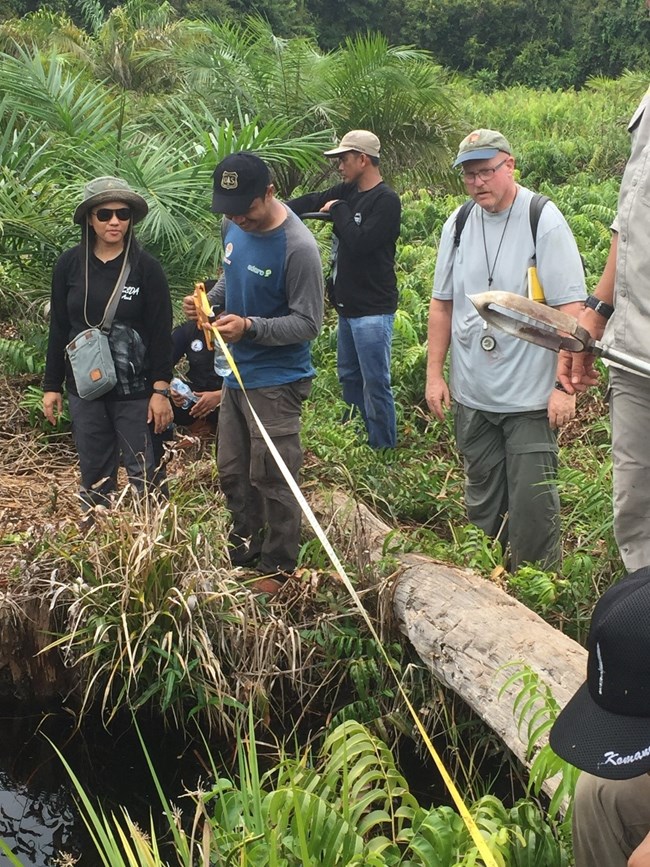Last updated: February 2, 2018
Article
Restoring Wetlands in Rawa Singkil Wildlife Reserve, Indonesia

NPS Photo/ M. Ford

NPS Photo/ M. Flora
Along with managing over 20 million acres of wetlands in the United States, the National Park Service (NPS) also extends its capabilities worldwide. In November 2017 with funding provided by USAID/Indonesia to the US DOI International Technical Assistance Program, a team of NPS scientists were able to provide technical assistance to the Rawa Singkil Wildlife Reserve located in Sumatra, Indonesia.
Wetlands around the world provide vital ecosystem services; from water quality, to flood control, and even providing habitat for threatened and endangered species; and the wetlands in the Rawa Singkil Wildlife Reserve are no exception.
Indonesia is recognized as having the second greatest biodiversity in the world (after Brazil) and is noted for its globally important tropical forest, grassland/savanna/shrubland, freshwater, and marine/coastal ecoregions. The Greater Leuser ecosystem (of which Rawa Singkil is a part) provides habitat for Indonesia’s densest populations of orangutans, and the critically endangered Sumatran Tiger, Sumatran Elephant, and Sumatran Rhino. The Greater Leuser ecosystem is the only place in the world where all four species can be found together, however; the Rawa Singkil Wildlife Reserve is under threat from palm oil plantations and logging activity, which has led to the degradation of sensitive coastal peatland ecosystems in parts of Indonesia.
At the request of the Indonesian Ministry of Environment and Forestry, NPS scientists, Dr. Peter J. Sharpe, Dr. Mark Ford, and Mr. Mark Flora, were selected to assist the Wildlife Reserve in building its technical capacity related to peatland hydrology management and wetland restoration for an important coastal peat swamp in the Reserve.
The field team, composed of NPS and Indonesian Ministry of Environment and Forestry staff members, discussed restoration plans for the Trumon Resort Pilot Restoration Project. This included reviews of existing vegetation and proposed vegetative plantings, canal restoration, and desired outcomes.

NPS Photo/ M. Flora
